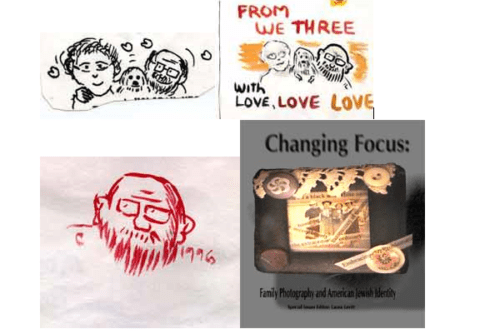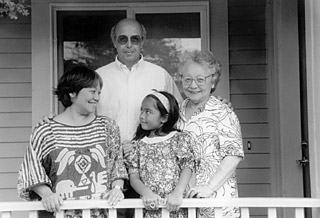. . . to death
Sila was condemned to death by strangulation in the district of George but was transported to Cape Town for the sentencing. Three years later, however, in 1826, her name appeared in a series of letters between the secretary of state in London and various officials in the colonial government in Cape Town. Sila, it was “discovered,” was still alive. In response to a memorial from London, Acting Governor Bourke wrote on October 25,1826 that it “would appear that the case has . . . been overlooked.” 1 The prime reason: Sila was pregnant when sentenced to death in March 1823. Under British law, a pregnant woman could not be executed (GH 23/8).
Sila’s child was born in the Cape Town prison in November 1823 but died a few months later. The arithmetic of this timing demands a series of brutal questions. Counting back from November and assuming that she carried the child to full term, Sila would have conceived this child in March, presumably while in custody and somewhere between Plettenberg Bay and Cape Town. As Bourke was forced to admit, she subsequently bore another child who was alive and living with her in prison in October 1826. Perhaps in shame, Bourke recommended her:
as an object for the Royal mercy, beseeching His Majesty to commute her sentence to labour [sic] on the public works for twenty years from the date of her confinement and that her child, whom I take to be the property of the Crown, may be apprenticed at the proper age [and] subsequently manumitted. (GH 23/8)
The response from the secretary of state was to demand an investigation into “all the circumstances of the case.” He directed Bourke to take care “to ascertain why the officers who reported the pregnancy of the prisoner in the first instance, omitted to report to the Governor when there no longer existed that impediment to the execution of the capital punishment.” 2 Bourke’s reply was to criticize the “very defective discipline at the Goal” (GH 23/8:852).
There was some truth to Bourke’s reply. The state of the colony’s prisons had already led the Cape government to seek a new superintendent of police. Baron Konrad de Laurentz arrived at the Cape in early 1826, having been appointed by the Colonial Office (over the existing Fiscal, Van Ryneveld, who had handled Sila’s appeal, and who had hoped to be promoted to superintendent of police). It was his attempt to reform the prison system that uncovered Sila’s existence in the Cape Town prison. 3 Bourke’s letter to London suggests what might have befallen Sila when he writes that she had been “allowed from some neglect or other to linger in prison for three years and a half with a sentence of death hanging over her head, and to demean herself during that time in a manner little calculated to prepare her for another world” (GH 23/8).
Overlooked, demeaned, and having borne two more children, the implication is that Sila was being used as a prison prostitute. As a result of de Laurentz’s investigation, Bourke argued that he had “perused some of the papers in this case” and had “the strongest grounds for believing that Sila and her children [were] in truth entitled to their freedom” (GH 23/8). And as a further result of his urging, Sila received a royal pardon from George IV in November 1827 on condition that she serve fourteen years at hard labor. 4
Sila was sent to Robben Island in September 1826, where she was one of three female prisoners among well over a hundred male prisoners. The circumstances were unpropitious, to say the least. The commander’s monthly return in January and February contained its usual summary of productivity in the island’s quarry. He listed the numbers of round stones cut, their weights, the weights of the number of oval stones, and he remarked upon progress on the construction of a jetty. In an aside, he wrote that a number of the contractors, prisoners, and guards had been sentenced to whippings and imprisonment for “picking the lock” of the female prisoners’ hut and then “cruelly using” the three women on the night of January 25. 5 Almost exactly nine months later, in September 1827, Sila gave birth to another baby. Van der Wat, on his farm all the way out in Plettenberg Bay, registered a new slave child named Catherina, born to Drusila [sic], who was listed in the District’s Slave Register as “currently on Robben Island for murder.” 6 From the date of the rape onward, the Robben Island Commandant’s monthly reports complain of the insolence of two slave women, Sila and Mina. And still the abuse continued.
Sila bore another daughter who did not survive. Of her daughter, Catherina, nothing else appears in the archival record other than Van der Wat’s registration of her. Of Sila’s other children, there is one report that Carolina, sold by Van der Wat to Stroebel, bore a girl named Rosie, and both were subsequently sold to another man named Sterling. Nothing else is recorded of Camies or Pieter, other than a notification that Camies had been sold to an owner in Uitenhage. Sila herself simply drops out of the record after 1830. It is possible that she, like all other women prisoners, were transferred off Robben Island to the town prison in 1835. Whether she survived or not is still unclear.
- Letter from Acting Governor Lieutenant Colonel Bird to [unknown]. 25 October 1826 in GH 23/8 Papers Dispatched to Secretary of State, London: General Despatches, 1826-1828. See Memorial No. 43.[↑]
- GH 1/59 Papers Received from Secretary of State, London: General Despatches, 1826 December – 1827 March, Reference 341, p. 852.[↑]
- See Alan F. Hattersley, The First South African Detectives (Cape Town: Howard Timins, 1960): 30-31.[↑]
- Letter from GH 1/65 Papers Received from Secretary of State, London: General Despatches. See memorial number 942.[↑]
- RI 334, Commandant of Robben Island 1827, Robben Island Report, No. 32.[↑]
- This entry in the register spells Sila’s name as Drusilia and lists her as the mother of Talmag, whose age is given as forty-three-and-a-third. Once again, the arithmetic does not add up and points to some clerical error, at best, or outright obfuscation. Sila/Drusilia is also listed as the mother of a young slave girl named Lena, aged about seven-and-a-third years. Her registration date was January 3,1820. Was she indeed Sila’s child? The court records are utterly silent about this, and Lena does not appear in any other documents listing Sila’s children. If she was Sila’s child, one assumes that mention would have been made of her in the various investigations into her claim that she was a free woman as a result of the will of the widow, Hendrina Jansen.[↑]



